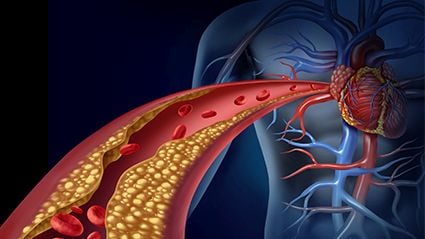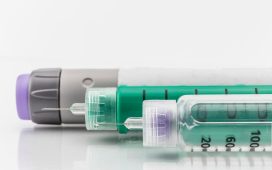Despite reductions in prevalence, 26.8 percent with an LDL-C level of 190 mg/dL or greater were unaware in 2017 to 2020
By Elana Gotkine HealthDay Reporter
THURSDAY, Nov. 2, 2023 (HealthDay News) — From 1999-2000 to 2017-2020, there was a reduction in the prevalence of elevated low-density lipoprotein cholesterol (LDL-C), although a considerable proportion are still unaware and untreated, according to a research letter published online Nov. 1 in JAMA Cardiology.
Ahmed Sayed, M.B.B.S., from Ain Shams University in Cairo, and colleagues conducted a cross-sectional study using data from the National Health and Nutrition Examination Survey to identify U.S. adults with LDL-C levels of 160 to 189 mg/dL and ≥190 mg/dL from 1999-2000 to 2017-2020. Overall, 23,667 participants were included, of whom 7.8 and 2.8 percent had an LDL-C level of 160 to 189 mg/dL and ≥190 mg/dL, respectively.
The researchers found that from 1999-2000 to 2017-2020, the age-adjusted prevalence of an LDL-C level of 160 to 189 mg/dL and ≥190 mg/dL decreased from 12.4 to 6.1 percent and from 3.8 to 2.1 percent, respectively. Among those with an LDL-C level of 160 to 189 mg/dL, the fraction who were unaware and untreated decreased from 52.1 to 42.7 percent from 1999-2000 to 2017-2020, while that of those with an LDL-C level ≥190 mg/dL decreased from 40.8 to 26.8 percent. Among those with elevated LDL-C, younger adults, men, racial and ethnic minority groups, those with lower educational attainment, those with lower income, and those without health insurance were more often unaware.
“Among those with an LDL-C of 190 mg/dL or greater, one in four are unaware and untreated, with a higher proportion for an LDL-C of 160 to 189 mg/dL,” the authors write. “Strategies to identify and treat these individuals may improve outcomes and reduce disparities.”
Several authors disclosed ties to the pharmaceutical industry.
Copyright © 2023 HealthDay. All rights reserved.








